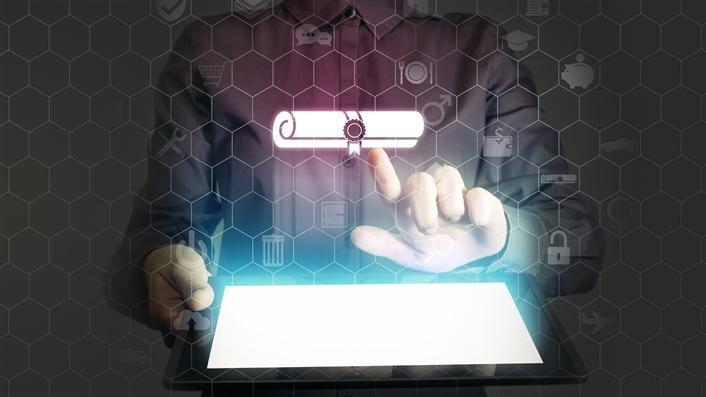how Blockchain Is Revolutionizing Qualification Verification: Secure, Transparent, and Efficient Credentials
In today’s fast-paced digital world, verifying qualifications and credentials has become more critically important—and challenging—than ever before. From academic degrees too professional certifications, employers and educational institutions need ways to ensure that credentials are authentic and trustworthy. Enter blockchain technology. With its promise of decentralized, tamper-proof record keeping, blockchain is transforming the landscape of qualification verification. In this article, we’ll explore how blockchain is making qualification verification more secure, transparent, and efficient, and what it means for the future of education and employment.
Understanding Blockchain-Based Qualification Verification
blockchain qualification verification leverages distributed ledger technology to store academic records and professional credentials on an immutable database. Instead of relying on centralized authorities,blockchain uses cryptographic methods to ensure data integrity.
- Decentralization: No single entity owns or controls the data; it’s maintained across a network of computers (nodes).
- Immutability: Once a credential is recorded on the blockchain, it cannot be altered or erased.
- Transparency: Credentials can be easily verified by authorized parties, decreasing the chance of fraud.
- Efficiency: Automation and digitization significantly reduce time and administrative costs.
Key Benefits of blockchain in Qualification Verification
Blockchain-powered credential verification offers numerous advantages over traditional methods. Here’s why organizations and individuals are embracing this technology:
1. Enhanced Security and Fraud Prevention
- All records are encrypted and distributed, making them practically unachievable to forge.
- Verification is automatic and instant, reducing opportunities for counterfeit qualifications.
2.Full Transparency and Trust
- Employers and institutions can instantly verify an individual’s credentials with full confidence in their authenticity.
- Blockchain audit trails make every change traceable and accountable.
3. Efficiency and Cost Savings
- Verification processes that once took days or weeks are reduced to minutes.
- Lower administrative overhead means decreased processing fees for both issuers and recipients.
4. Empowering Individuals
- Credential holders gain control over their own data, sharing access as needed.
- Portability allows credentials to be used globally, eliminating geographical barriers.
How Blockchain Qualification Verification Works
- issuance: An institution or certifying body issues a digital credential to a graduate or professional,recording it as a transaction on the blockchain.
- Storage: The digital certificate is stored securely on the blockchain, accessible through a digital wallet or secure link.
- Verification: Employers or other parties can instantly check the validity of a credential by referencing its unique blockchain record.
- Updates: Any changes (e.g., revocation or correction) are also recorded on the blockchain, ensuring a credible, up-to-date history.
This end-to-end approach eliminates middlemen, reduces paperwork, and elevates trust for all stakeholders.
Practical Use Cases: Blockchain in Credentials Verification
Blockchain-driven qualification verification isn’t just theoretical. It’s already making a difference in the real world. Here are a few notable examples:
Academic Credentials
- Universities like MIT and the University of Melbourne issue blockchain-based diplomas, allowing graduates to share verifiable digital credentials with prospective employers worldwide.
Professional Certifications
- Certification bodies in IT,finance,and healthcare use blockchain to issue tamper-proof certificates,streamlining employer background checks.
Government and Public Sector
- Countries like Malta and Singapore use blockchain solutions to verify educational and professional qualifications for immigration and public service hiring.
Corporate Learning & Employee Verification
- Enterprises leverage blockchain to track staff training, compliance, and upskilling credentials across international branches.
Case Study: MIT’s Digital Diplomas
In 2017, the Massachusetts Institute of Technology (MIT) became a pioneer by issuing digital diplomas anchored on the Bitcoin blockchain. Graduates recieve a cryptographically signed certificate in their digital wallet, which they can freely share with recruiters, eliminating the need for third-party verification.
“With blockchain,our alumni have a portable,verifiable,and secure digital diploma they control. It’s a leap forward for trust and efficiency.” – MIT Registrar’s Office
This initiative has resulted in smoother hiring processes for graduates and reduced verification requests for university staff.
Practical Tips for Adopting Blockchain Credential Verification
- Choose the right platform: Research trusted blockchain solutions tailored for academic or professional credentials (e.g., Blockcerts, Learning Machine).
- Start small: Pilot blockchain verification with select programs or certificates before a full-scale rollout.
- Collaborate: Engage employers, institutions, and certification bodies to foster broad acceptance and integration.
- Educate stakeholders: Provide training for staff and credential holders on the value and security of blockchain credentials.
- Prioritize data privacy: Adopt solutions that comply with global data protection standards like GDPR.
Challenges and Future Developments
While blockchain brings excitement to the world of qualification verification, some challenges remain:
- Interoperability: Different platforms must work together to maximize scalability and adoption.
- Regulatory concerns: Data privacy laws and standards for digital certificates are still evolving.
- Awareness and adoption: Wider understanding and acceptance among employers and institutions is needed for mainstream use.
However, ongoing innovations—such as open standards like W3C Verifiable Credentials—promise a more interconnected and trustworthy global credential ecosystem in the near future.
Conclusion: The Future of Secure and Efficient Qualification Verification
Blockchain technology is ushering in a new era for qualification verification—one marked by enhanced security, transparency, and efficiency. By putting credential holders in control and enabling instant, reliable verification, blockchain benefits educational institutions, employers, and individuals alike. As adoption grows and standards evolve,the use of blockchain for credential verification is poised to become the global norm,ensuring that qualifications are always trustworthy,portable,and tamper-proof.
If you’re an educational institution, certifying body, or employer, now’s the time to explore how blockchain can streamline your qualification verification processes and reinforce trust in the credentials you issue or require.

